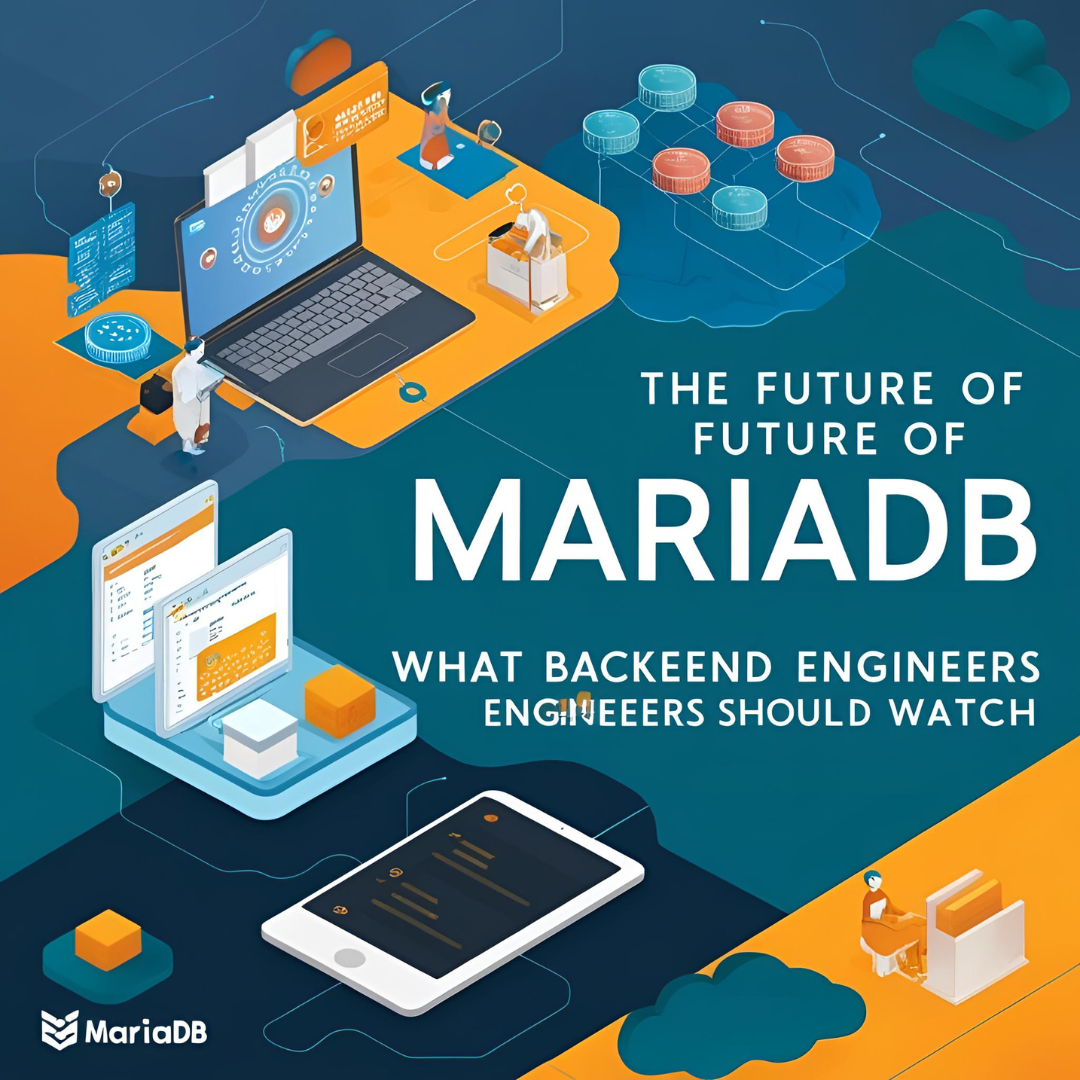As MySQL’s community-driven fork continues to evolve, MariaDB is charting its own path with innovations that increasingly differentiate it from its Oracle-owned counterpart. For backend engineers looking to stay ahead of database technology trends, here are the key MariaDB developments worth monitoring.
ColumnStore and Analytics Evolution
MariaDB’s ColumnStore engine represents one of the most significant divergences from MySQL, offering a column-oriented storage format optimized for analytical workloads:
- Hybrid Transactional/Analytical Processing (HTAP): MariaDB is improving its ability to handle both OLTP and OLAP workloads in a single database instance, reducing the need for separate systems and complex ETL processes.
- Enhanced Distributed Query Processing: The focus on better distribution algorithms and parallel query execution is positioning ColumnStore as a compelling alternative to specialized data warehouse solutions.
- Integration with Streaming Data: Watch for tighter integration between ColumnStore and real-time data streams, enabling more efficient handling of time-series data and continuous analytics.
Cloud-Native Architecture
MariaDB is embracing cloud-native principles to better serve modern application development needs:
- SkySQL Maturation: MariaDB’s cloud database-as-a-service offering continues to evolve with improved automation, observability, and performance optimization for different cloud environments.
- Kubernetes Integration: Expect deeper integration with Kubernetes operators and better support for containerized deployments, making MariaDB more manageable in cloud-native infrastructure.
- Multi-Cloud Data Replication: Enhanced tools for cross-cloud replication and data synchronization will help address concerns about vendor lock-in and regional data residency requirements.
Advanced Replication Technologies
MariaDB is pushing boundaries with its replication capabilities:
- Stronger Consistency Guarantees: Look for improvements to Galera Cluster that provide better consistency while maintaining performance at scale.
- Multi-Source Replication Enhancements: More sophisticated multi-source replication topologies will enable complex data integration scenarios and improved high availability configurations.
- Cross-Engine Replication: The ability to replicate between different storage engines (like InnoDB and ColumnStore) within the same database cluster will unlock new architectural possibilities.
Expanded JSON and Document Store Capabilities
While MongoDB and other document databases have dominated the NoSQL space, MariaDB continues to enhance its JSON capabilities:
- Improved JSON Query Performance: Expect more efficient indexing and retrieval mechanisms for JSON data.
- JSON Schema Validation: Enhanced validation capabilities will help maintain data quality when working with semi-structured information.
- Better Document Store APIs: More intuitive interfaces for working with document collections will make MariaDB a stronger contender in the document database space.
AI Integration and Intelligent Features
MariaDB is likely to incorporate more AI-driven capabilities:
- Autonomous Database Features: Self-tuning, self-healing, and automatic query optimization capabilities will make administration less burdensome.
- Built-in Machine Learning Functions: Direct support for common ML operations within SQL will simplify data science workflows.
- Intelligent Query Routing: Smarter decisions about where and how to execute queries across distributed environments will improve performance for complex deployments.
Enterprise Security Enhancements
Security remains a focal point for MariaDB’s development:
- Enhanced Data Masking and Anonymization: More sophisticated tools for protecting sensitive data will help organizations comply with privacy regulations.
- Zero-Trust Architecture Support: Better integration with modern security frameworks and identity management systems will improve defense-in-depth capabilities.
- Transparent Data Encryption Improvements: Look for performance optimizations and enhanced key management for encrypted databases.
Time-Series Data Optimization
With the growth of IoT and operational monitoring, time-series data handling is becoming increasingly important:
- Specialized Storage for Temporal Data: Custom storage formats optimized for time-series workloads will improve performance for monitoring and IoT applications.
- Advanced Time-Based Partitioning: Smarter partitioning strategies will make historical data management more efficient.
- Time-Aware Query Optimization: Specialized query planning for time-series analytics will deliver faster insights from temporal data.
Sustainability Features
As environmental concerns grow in IT operations:
- Energy-Efficient Query Processing: Algorithms that optimize for both performance and energy consumption will appeal to environmentally conscious organizations.
- Resource Usage Metrics: Better visibility into the environmental impact of database workloads will help organizations meet sustainability goals.
- Optimized Storage Footprints: More efficient data storage techniques will reduce the hardware requirements for large datasets.
Community and Governance
The open-source nature of MariaDB continues to be one of its greatest strengths:
- Growing Foundation Influence: The MariaDB Foundation’s role in guiding development priorities ensures the database evolves to meet community needs rather than just commercial interests.
- Enterprise-Community Balance: Watch how MariaDB navigates the tension between enterprise features and community accessibility.
- Contributor Ecosystem Expansion: A broader base of contributors will bring more diverse perspectives and innovations to the codebase.
What Backend Engineers Should Do Now
To prepare for MariaDB’s evolving future:
- Experiment with ColumnStore: Even if you don’t need analytical capabilities today, understanding this technology will expand your architectural options.
- Invest in Learning Cloud Deployment Patterns: Familiarize yourself with SkySQL and Kubernetes-based MariaDB deployments.
- Review Your Data Models: Consider how your applications might benefit from MariaDB’s enhanced JSON and time-series capabilities.
- Monitor Performance Metrics: Establish baselines now to better evaluate the impact of future MariaDB improvements.
- Participate in the Community: Contributing to discussions and testing release candidates helps shape the direction of the database while keeping your skills current.
MariaDB’s future looks promising as it continues to differentiate itself from MySQL while maintaining compatibility where it matters most. By staying informed about these developments, backend engineers can make strategic decisions about database technology that will serve their applications well in the years to come.


Leave a Reply